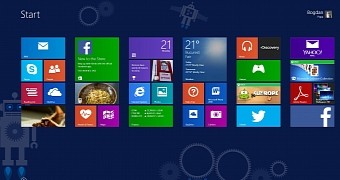While Windows 10 is Microsoft’s preferred choice in terms of operating systems for the desktop, it’s no secret that there still are millions of users running Windows 7 and Windows 8.1.
And while sticking with Windows 7 will soon no longer be a good idea, since it reaches the end of support in January 2020, not the same thing can be said about Windows 8.1, which would get updates until January 2023.
Windows 8.1 reached the end of mainstream support on January 9 this year, but it will continue to receive security updates as part of extended support for at least 5 more years.
Does this mean that Windows 8.1 users should already jump ship and move to Windows 10 or a different non-Microsoft operating system?
Judging from the developer exodus happening lately, the answer is yes. In reality, I’d say there’s nothing to worry about in the short term.
More and more devs have decided to abandon Windows 8.1 and pull their apps from the Windows Store, choosing instead to focus their efforts on Android, iOS, and some on Windows 10. This means that those sticking with Windows 8.1 would no longer be able to use their apps, instead being forced to switch to alternatives that often include the web-based version of their services.
From a consumer perspective, this doesn’t make much of a difference because the share of users relying on Windows Store apps for their daily activities is likely very small.
According to NetMarketShare data, Windows 8.1 had a share of 4.95 percent in June 2016, which makes it the fourth most popular operating system on the desktop after Windows 7, Windows 10, and macOS 10.13. Windows XP is next with 4.08 percent.
“Fourth most-used desktop OS.”
While Windows Store app developers are leaving the platform in search of a wider audience, Windows 8.1 remains an operating system that’s just as good as before.
Truth be told, without mainstream support new features would no longer be released, but in the last couple of years, Microsoft’s focus has been entirely on Windows 10 anyway, so Windows 8.1 barely received any such improvements.
Windows 8.1 is the substantially improved version of Windows 8, and it brings back the Start menu for a more user-friendly desktop. It doesn’t have a Start menu, but this shouldn’t be such a big problem given that there are lots of third-party Start menu apps out there. The Start screen itself, however, is a feature that still doesn’t make any sense on the desktop, but you can use it anyway with a mouse and keyboard.
In my experience, Windows 8.1 has been a rather fast, stable, and reliable operating system that fixes many of the annoyances of the original Windows 8. In fact, Windows 8 has often been considered the second Windows Vista and another Microsoft flop, so it’s quite remarkable for Windows 8.1 to improve things in such a substantial manner.
Windows 8.1 has never caused any significant performance issues on my devices, and today it runs just as smoothly as before. Needless to say, Windows 10 comes with many important improvements, but for those who are still on Windows 8.1 and don’t think of upgrading, that’s quite redundant.
Technically, Windows 8.1 should be an evolved version of Windows 7, which at this point is the number one desktop operating system, so when asking whether it’s worth jumping ship, the answer is pretty easy to guess.
And that’s why I’m asking you: is Windows 8.1 a platform that needs to be abandoned? Or users can continue running it without any concern until the end of extended support is reached? Let us know what you think in the comment box after the jump.

 14 DAY TRIAL //
14 DAY TRIAL //